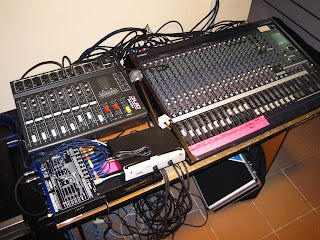“Looking for independent, confident individual
willing to take on the world single-handedly. Any age, any gender, no
experience required. Must be very motivated, strict yet flexible, outspoken yet
reserved, and above all willing to work without pay at your own expense for
several months at the bare minimum. Job scope vague and must be able to juggle
accounts, human resource, sales, public relations, personal life and have money
left over to repeat routine over and over again.”
I admit that it is a rather off-putting ad
which wouldn’t receive any calls – but while it isn’t the world’s greatest job
advert, that’s really what it is when you run your own business. Undoubtedly one of the manliest ways to make a
living, rest assured this isn’t for the faint of heart (and faint of work)!
Registering A Company
It is
possible to operate a business without a company, address and/or venue, such as
a home-operated business. But having a company to put it all under makes
accounts and cashflow much easier to manage as it isn’t mixed up under your
personal savings account. To do this you need to pay a visit to the Malaysian
Registrar of Companies (Suruhanjaya Syarikat Malaysia) to pick a name and
legally register it.
There are generally two types of companies that
can be registered; a private limited company (Sendirian Berhad) and a sole
proprietorship (commonly - and wrongly, I believe - known as an “enterprise”),
both with advantages and disadvantages. A Sendirian Berhad company is a
properly licensed legal entity, with paid-up capital and subdivision of shares
among the owners. As a separate legal entity, the company’s debts are separated
from the owners’ debts – which means the company is only liable to pay back a
maximum value of paid-up capital should it fall into debt, therefore protecting
personal assets of the owner. As a sole proprietorship/partnership, the name
and company is basically an extension of the owners and any liabilities are
borne by the owners’ personal assets directly - and should the owner pass away
the business is no longer valid unless in the case of a partnership (under the impression
that the partner(s) survives).
On the other hand, starting up a
sole proprietorship is much simpler and economical – the registration cost ,
which is basically all you need to own the name, would cost you only RM95
should you do it yourself, which I would highly recommend to get familiar with
the system. There are no tax audits (all done in-house), no company secretary
to sign legal documents, no resolutions or AGMs (annual general meetings) to
call for and as such, a vast majority of businesses out there are sole
proprietorships. Bear in mind that this requires a lot of trust should other
partners be involved as there is no law and/or legal agreement regarding shares
and ownership – the form only lists down the name of the partners and nothing
more!
Naming Your Company
Yes, it’s
just a name, that’s true but there are certain words that cannot be used as a
company name unless under specific orders from a government body supporting it.
For example, the word “King” is disallowed as it is associated with royalty – a
good example is why the parent company of Sushi King in Malaysia is called
“Sushi Kin Sdn Bhd”, intentionally missing the letter “g” at the end. Any name
associated with a political party is also disallowed – which means “UMNO Photo
Printing” and “Nasi Kandar Pakatan Rakyat “ are out of the picture. Anything to
do with the corporate definition of securities (“Securities Trading”, “Stock
Market”, “Bursa Saham”) are also unusable so check with the Registrar before
you go about designing that logo and font that took weeks to perfect only to
find out that the name cannot be used.
Another issue with a name, this time for
practicalities’ sake – is that one must be able to spell and write down the
company name with ease. The name “Max Karl Ernst Ludwig Planck Sandwiches”, as
interesting and memorable a tribute to the great physicist as it may seem, is a
nightmare for our local Malaysians to spell and write down. All someone has to
do is to miss a letter in it for a cheque to bounce, taking up precious time
and throwing a wrench in your banking movement. But say you like the name “Max
Karl Ernst Ludwig Planck Sandwiches” and want to keep it (you must really
REALLY like this name) it is always possible to trademark it and run it under a
parent company, as with the case of Sushi King.
Actually Running The Company
Hundreds
upon thousands of books and articles have been written with regards to running
a business, and like this article, there are hundreds of thousands more to
come. While the basics of running a business remain (i.e. proper balancing of
cashflow, profit vs loss, stock checking, etc) each business is unique; methods
that may work for others might not work for you and vice versa. It’s all about
experimenting and taking a risk – but above all, the one word that should
always be in the mind of a businessman is consistency. Consistent opening hours,
consistent stocks and products, consistent salesmen and consistent operating
hours will result in consistent cashflow and income. Consistent headaches as
well, mind you but it’s all part and parcel of the game.
There you have it! In a nutshell, this is how
most businesses start up; in upcoming articles I hope to write about more
business strategies and out-of-the box thinking for company growth and capital
gain.
Now if you’ll excuse me, an attorney from the Max
Planck Foundation is here to see me...!

































